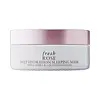What's inside
What's inside
 Key Ingredients
Key Ingredients

 Benefits
Benefits

 Concerns
Concerns

No concerns
 Ingredients Side-by-side
Ingredients Side-by-side

Water
Skin ConditioningHelianthus Annuus Seed Oil
EmollientGlycerin
HumectantBetaine
HumectantMethylpropanediol
SolventPolyacrylate Crosspolymer-6
Emulsion Stabilising1,2-Hexanediol
Skin ConditioningSimmondsia Chinensis Seed Oil
EmollientCarbomer
Emulsion StabilisingGlyceryl Caprylate
EmollientSodium Hyaluronate
HumectantSodium Hydroxide
BufferingSodium Phytate
O-Cymen-5-Ol
AntimicrobialTocopherol
AntioxidantPolyglutamic Acid
Skin ConditioningRosa Damascena Flower Water
MaskingWater
Skin ConditioningGlycerin
HumectantPentylene Glycol
Skin ConditioningPEG-60 Hydrogenated Castor Oil
EmulsifyingRosa Damascena Flower Extract
MaskingCucumis Sativus Fruit Extract
EmollientRosa Damascena Flower Oil
MaskingTocopherol
AntioxidantCarbomer
Emulsion StabilisingSodium Hydroxide
BufferingTetrasodium EDTA
Sodium Hyaluronate
HumectantMenthoxypropanediol
MaskingCaprylic/Capric Triglyceride
MaskingCaramel
Cosmetic Colorant1,2-Hexanediol
Skin ConditioningCaprylyl Glycol
EmollientPhenoxyethanol
PreservativeCitronellol
PerfumingGeraniol
PerfumingDicaprylyl Carbonate
EmollientPropanediol
SolventAmmonium Acryloyldimethyltaurate/Vp Copolymer
Dimethicone
EmollientOenothera Biennis Root Extract
Skin ConditioningTocopheryl Acetate
AntioxidantButylene Glycol
HumectantDimethicone/Vinyl Dimethicone Crosspolymer
Skin ConditioningPolyacrylamide
C13-14 Isoparaffin
EmollientHydroxylated Lecithin
EmulsifyingTrehalose
HumectantUrea
BufferingLaureth-7
EmulsifyingSerine
MaskingBetaine
HumectantInositol
HumectantTaurine
BufferingAlgin
MaskingBHT
AntioxidantAcacia Senegal Gum
MaskingGlyceryl Polyacrylate
Pullulan
Citric Acid
BufferingDisodium Phosphate
BufferingPotassium Phosphate
BufferingPotassium Sorbate
PreservativeRosa Damascena Flower Water, Water, Glycerin, Pentylene Glycol, PEG-60 Hydrogenated Castor Oil, Rosa Damascena Flower Extract, Cucumis Sativus Fruit Extract, Rosa Damascena Flower Oil, Tocopherol, Carbomer, Sodium Hydroxide, Tetrasodium EDTA, Sodium Hyaluronate, Menthoxypropanediol, Caprylic/Capric Triglyceride, Caramel, 1,2-Hexanediol, Caprylyl Glycol, Phenoxyethanol, Citronellol, Geraniol, Dicaprylyl Carbonate, Propanediol, Ammonium Acryloyldimethyltaurate/Vp Copolymer, Dimethicone, Oenothera Biennis Root Extract, Tocopheryl Acetate, Butylene Glycol, Dimethicone/Vinyl Dimethicone Crosspolymer, Polyacrylamide, C13-14 Isoparaffin, Hydroxylated Lecithin, Trehalose, Urea, Laureth-7, Serine, Betaine, Inositol, Taurine, Algin, BHT, Acacia Senegal Gum, Glyceryl Polyacrylate, Pullulan, Citric Acid, Disodium Phosphate, Potassium Phosphate, Potassium Sorbate
 Reviews
Reviews

Ingredients Explained
These ingredients are found in both products.
Ingredients higher up in an ingredient list are typically present in a larger amount.
1,2-Hexanediol is a synthetic liquid and another multi-functional powerhouse.
It is a:
- Humectant, drawing moisture into the skin
- Emollient, helping to soften skin
- Solvent, dispersing and stabilizing formulas
- Preservative booster, enhancing the antimicrobial activity of other preservatives
Betaine is a common humectant (a substance that promotes retention of moisture). It's known to be gentle on the skin and can help balance hydration.
This ingredient is best for improving hydration and soothing irritated skin. Studies also show it helps even out skin tone.
Fun fact: Betaine is naturally created in the skin and body. The kind found within cosmetic products can be either plant-derived or synthetic.
Another name for betaine is trimethylglycine.
Learn more about BetaineCarbomer is a polymer of acrylic acid. Its main role is to create a gel consistency.
A high amount of carbomer can cause pilling or balling up of products. Don't worry, most products contain 1% or less of carbomer.
Glycerin is already naturally found in your skin. It helps moisturize and protect your skin.
A study from 2016 found glycerin to be more effective as a humectant than AHAs and hyaluronic acid.
As a humectant, it helps the skin stay hydrated by pulling moisture to your skin. The low molecular weight of glycerin allows it to pull moisture into the deeper layers of your skin.
Hydrated skin improves your skin barrier; Your skin barrier helps protect against irritants and bacteria.
Glycerin has also been found to have antimicrobial and antiviral properties. Due to these properties, glycerin is often used in wound and burn treatments.
In cosmetics, glycerin is usually derived from plants such as soybean or palm. However, it can also be sourced from animals, such as tallow or animal fat.
This ingredient is organic, colorless, odorless, and non-toxic.
Glycerin is the name for this ingredient in American English. British English uses Glycerol/Glycerine.
Learn more about GlycerinSodium Hyaluronate is hyaluronic acid's salt form. It is commonly derived from the sodium salt of hyaluronic acid.
Like hyaluronic acid, it is great at holding water and acts as a humectant. This makes it a great skin hydrating ingredient.
Sodium Hyaluronate is naturally occurring in our bodies and is mostly found in eye fluid and joints.
These are some other common types of Hyaluronic Acid:
Learn more about Sodium HyaluronateSodium Hydroxide is also known as lye or caustic soda. It is used to adjust the pH of products; many ingredients require a specific pH to be effective.
In small amounts, sodium hydroxide is considered safe to use. However, large amounts may cause chemical burns due to its high alkaline.
Your skin has a natural pH and acid mantle. This acid mantle helps prevent harmful bacteria from breaking through. The acid mantle also helps keep your skin hydrated.
"Alkaline" refers to a high pH level. A low pH level would be considered acidic.
Learn more about Sodium HydroxideTocopherol (also known as Vitamin E) is a common antioxidant used to help protect the skin from free-radicals and strengthen the skin barrier. It's also fat soluble - this means our skin is great at absorbing it.
Vitamin E also helps keep your natural skin lipids healthy. Your lipid skin barrier naturally consists of lipids, ceramides, and fatty acids. Vitamin E offers extra protection for your skin’s lipid barrier, keeping your skin healthy and nourished.
Another benefit is a bit of UV protection. Vitamin E helps reduce the damage caused by UVB rays. (It should not replace your sunscreen). Combining it with Vitamin C can decrease sunburned cells and hyperpigmentation after UV exposure.
You might have noticed Vitamin E + C often paired together. This is because it is great at stabilizing Vitamin C. Using the two together helps increase the effectiveness of both ingredients.
There are often claims that Vitamin E can reduce/prevent scarring, but these claims haven't been confirmed by scientific research.
Learn more about TocopherolWater. It's the most common cosmetic ingredient of all. You'll usually see it at the top of ingredient lists, meaning that it makes up the largest part of the product.
So why is it so popular? Water most often acts as a solvent - this means that it helps dissolve other ingredients into the formulation.
You'll also recognize water as that liquid we all need to stay alive. If you see this, drink a glass of water. Stay hydrated!
Learn more about Water